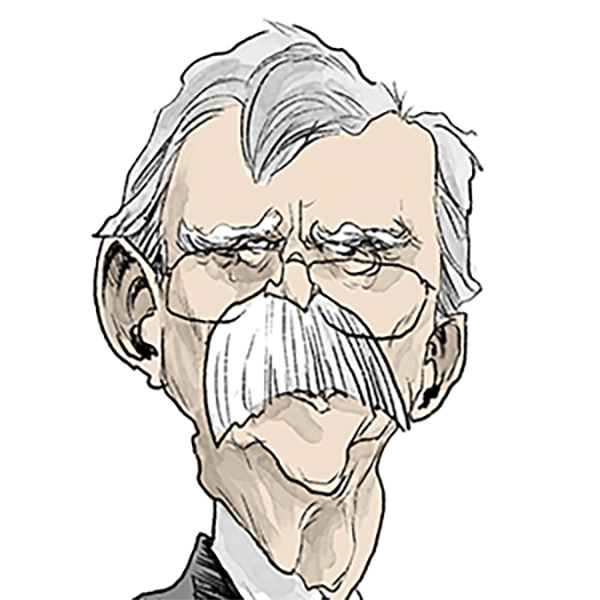Here's how Canadian wildfires are impacting Michigan air quality
Published in Science & Technology News
DETROIT — As Canadian wildfire smoke continues to drift south toward the United States, air quality in Michigan worsening, prompting officials to issue warnings.
The Michigan Air Quality Division issued an advisory Thursday for elevated levels of fine particulate (PM2.5) in the eastern Upper Peninsula and all counties in the northern Lower Peninsula.
Officials said pollutants within these areas could temporarily reach the Unhealthy for Sensitive Groups (USG, Orange AQI) and Unhealthy (Red AQI) range.
The Michigan regions are seeing decreased air quality following wildfires burning in three Canadian provinces, which have forced some 27,000 Canadians to flee their homes. The smoke has reportedly even reached Europe.
Detroit is ranked as the fourth most polluted major city in the world behind Dakar, Senegal, Santiago, Chile and Chicago, according to IQAir. The current air quality index is 160. The index is among the worst in the state, in addition to Grand Rapids, which has an index of 158 and Benton Harbor, which has an index of 152.
Dr. Natasha Bagdasarian, chief medical executive with the Michigan Department of Health and Human Services, called the situation in the state "dynamic," and stressed that residents monitor the air quality in their area so they can know how to best protect themselves.
"It's really important for people to get an app or a website that they know and trust and to use it regularly, because if you're someone who has underlying heart and lung disease, your recommendation may be slightly different than for people who don't have underlying heart and lung disease," Bagdasarian said. "As conditions change, there may be recommendations for those with healthy lungs as well. ... What is true one hour may not be true the next hour."
The Thursday advisory included the following counties in the Upper Peninsula: Alger, Chippewa, Delta, Luce, Mackinac and Schoolcraft, encompassing nearly the eastern half of the region.
Bagdasarian said it's important to remember that although the wildfires in Canada may be far away geographically, the size of the particles in Michigan's air index can still pose a risk.
"We're talking about incredibly small particles. These are particles that can ... remain on the wind and remain airborne for a very long time," Bagdasarian said. "And they're problematic not only because they can remain airborne for so long, but because of their small size, they can get to the very smallest parts of your lungs."
A National Weather Service advisory also was issued the same day for all counties in the Lower Peninsula until Friday at noon. It included the cities of Dowagiac, Cassopolis, Edwardsburg, Marcellus, Sturgis, Three Rivers, White Pigeon, Mendon, Coldwater, Bronson, Hillsdale, Jonesville, Litchfield, Benton Harbor, St. Joseph, Paw Paw Lake, Niles, New Buffalo, Stevensville and Berrien Springs.
The Michigan Air Quality Division said that as smoke from Canadian wildfires continues to threaten the upper Midwest, "monitors in the western (Upper Peninsula) showed a large increase surface concentrations, during Tuesday, as smoke mixed down, which sent PM-2.5 concentrations soaring into the Unhealthy and higher range."
The Southeast Michigan Council of Governments announced Thursday the second air quality advisory of the season in Southeast Michigan, noting that the wildfire smoke from Canada is impacting surface-level fine particulate matter concentrations across the Lower Peninsula.
"Wildfire smoke from Canada continues to impact air quality in Southeast Michigan," said Amy O'Leary, executive director of SEMCOG, in a statement. "We advise residents, especially those with respiratory conditions, to limit outdoor activity and stay hydrated."
Jim Haywood, a senior meteorologist with the Michigan Department of Environment, Great Lakes, and Energy, said since "Thursday morning monitors showed the thickest of the smoke had advanced further south than anticipated, and will continue southward," an advisory was expected to remain in place through noon Friday.
"Some monitors are currently showing hourly values in the Unhealthy range, but we do not expect concentrations that high that to persist," he added. "The frontal boundary clears the state Saturday morning, and winds switching to a north/northeast direction will push the smoke south and west of the state. Some lingering smoke could allow for a continuation of Moderate fine particulate on Saturday, especially in southern areas."
The direction of the jet stream from Canada is bringing the smoke to the region, but that the air quality is expected to improve by Friday, said Megan Varcie, a meteorologist with the National Weather Service office in White Lake Township.
"By (Friday at noon), we're expecting things to kind of dissipate as the winds shift and the smoke gets redirected away from Michigan," she said. "It's all kind of dependent on the jet stream and the wind direction."
Varcie said Thursday morning's rain showers across Michigan did little to alleviate the air quality.
The Air Quality Division estimates the episode will be over by the end of the week, as the western states in the upper Midwest are slowly beginning to clean out. The western portion of the Upper Peninsula is also beginning to show improvement compared to Tuesday’s heavy smoke.
The American Lung Association also issued an advisory Thursday, warning that the air in parts of Michigan is unhealthy to breathe and can be especially harmful to sensitive groups, such as children, older adults and those with lung diseases like asthma and chronic obstructive pulmonary disease.
The association recommends that those living close to the fire-stricken areas remain indoors to reduce breathing smoke and other pollutants, as well as taking precautions for children, who are more susceptible to smoke. The groups says that ordinary dust masks, designed to filter out large particles, will not help in such situations, as they still allow the more dangerous smaller particles to pass through.
The National Weather Service recommends avoiding strenuous outdoor activities, especially for those with heart disease and respiratory diseases like asthma. Symptoms such as wheezing, coughing, chest tightness, dizziness, or burning in the nose, throat, and eyes should be monitored. NWS also advises limiting activities such as outdoor burning and the use of residential wood-burning devices.
Households should keep windows closed overnight to prevent smoke from getting indoors and, if possible, run central air conditioning with MERV-13 or higher rated filters.
SEMCOG also recommended to avoid refueling vehicles or topping off when refueling, using gasoline-powered lawn equipment and using charcoal lighter fluid.
"It's really important for you to just be aware of what the air quality index is in your neck of the woods, especially if you're someone with any heart or lung issues," Bagdasarian said. "So if you are someone with a history of COPD or asthma, or if you have a family member who struggles to breathe because of lung cancer, or any of those types of issues, it's especially important for you to be checking your air quality index."
_____
©2025 www.detroitnews.com. Visit at detroitnews.com. Distributed by Tribune Content Agency, LL










Comments